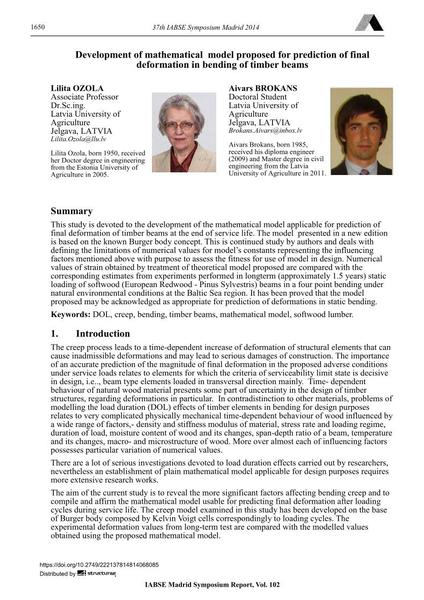Development of mathematical model proposed for prediction of final deformation in bending of timber beams

|
|
|||||||||||
Bibliografische Angaben
| Autor(en): |
Lilita Ozola
Aivars Brokans |
||||
|---|---|---|---|---|---|
| Medium: | Tagungsbeitrag | ||||
| Sprache(n): | Englisch | ||||
| Tagung: | IABSE Symposium: Engineering for Progress, Nature and People, Madrid, Spain, 3-5 September 2014 | ||||
| Veröffentlicht in: | IABSE Symposium Madrid 2014 | ||||
|
|||||
| Seite(n): | 1650-1657 | ||||
| Anzahl der Seiten (im PDF): | 8 | ||||
| Jahr: | 2014 | ||||
| DOI: | 10.2749/222137814814068085 | ||||
| Abstrakt: |
This study is devoted to the development of the mathematical model applicable for prediction of final deformation of timber beams at the end of service life. The model presented in a new edition is based on the known Burger body concept. This is continued study by authors and deals with defining the limitations of numerical values for model’s constants representing the influencing factors mentioned above with purpose to assess the fitness for use of model in design. Numerical values of strain obtained by treatment of theoretical model proposed are compared with the corresponding estimates from experiments performed in longterm (approximately 1.5 years) static loading of softwood (European Redwood - Pinus Sylvestris) beams in a four point bending under natural environmental conditions at the Baltic Sea region. It has been proved that the model proposed may be acknowledged as appropriate for prediction of deformations in static bending. |
||||
| Stichwörter: |
Holzbalken Biegung
|
||||
